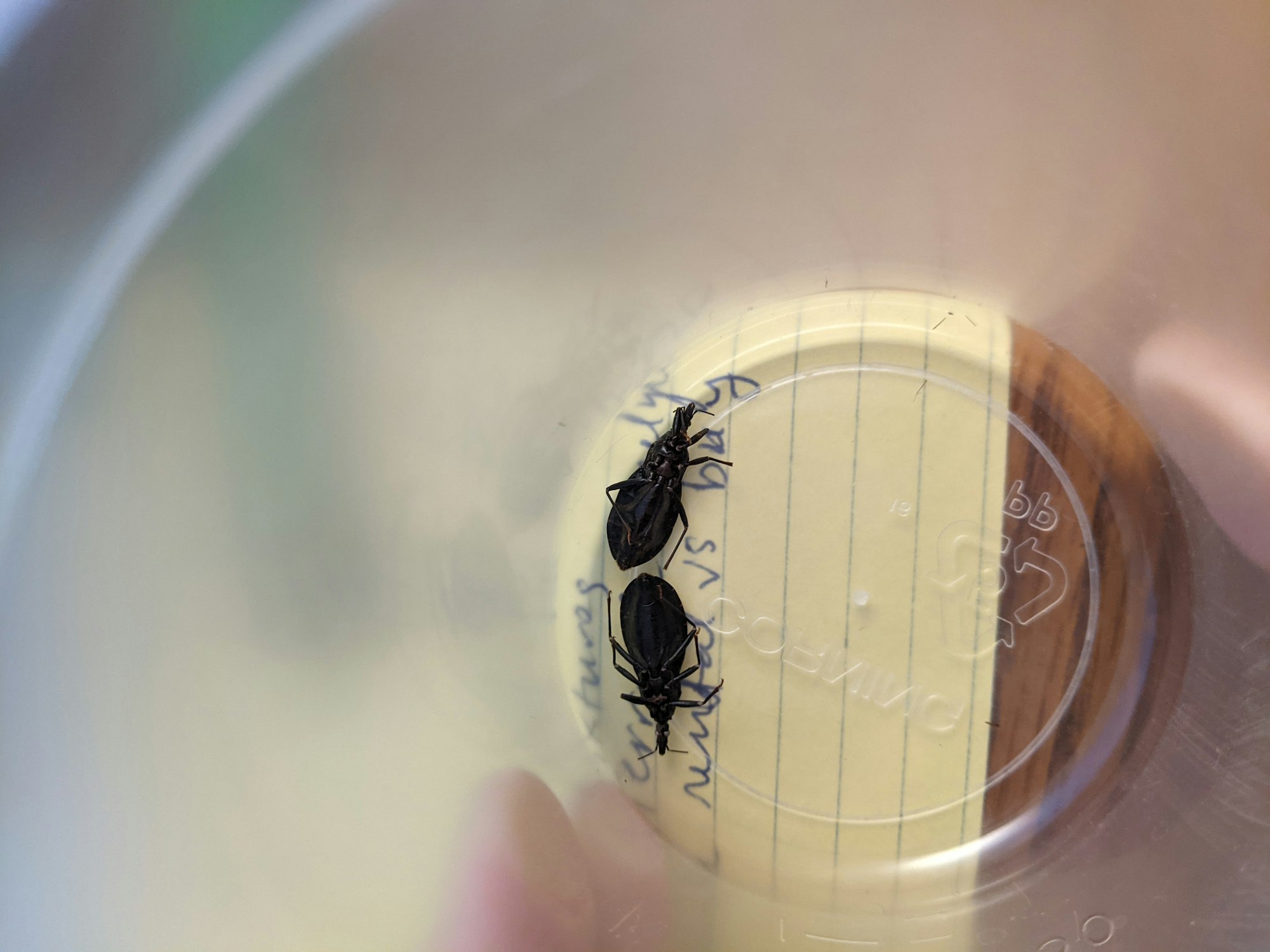Other Biting Flies & Insects
Snipe Flies, Symphoromyia spp.
Family Rhagionidae
There are two species of snipe fly known from Lake County. Little is known about their biology, but they are not a serious biting problem for people in the County. They have a characteristic "stiletto-shaped" body, and are orange or gray in color.
Black Flies, "Buffalo gnats"
Family Simuliidae
There are 9 black fly species known from Lake County. Most develop in clean, clear, fast-moving streams. The females dive into the water to glue their eggs to rocks or underwater plants. The larvae develop here, and pupate underwater; the adults emerge a few weeks to months later. Females bite a variety of mammals and birds, but the species present in Lake County rarely bite people.
Horse Flies & Deer Flies
Family Tabanidae
There are 19 species of tabanids known from Lake County. These are large, day-flying insects best known for their painful bites. Although their common names suggest that they feed on horses and deer, our local species feed on a variety of hosts, including man, cattle, and a few are not known to bite at all! In all cases, only the females bite, and they use the protein from bloodmeals for their eggs. The larvae (maggots) of most deer and horse flies are found in aquatic or semi-aquatic habitats (streams and ponds, or the muddy/sandy soils along the shore). The larave are largely predaceous on other insects.
Ceratopogonids
no-see-ums, punkies, biting gnats, biting black gnats
Family Ceratopogonidae
This is a diverse group of tiny flies. Larvae are predaceous or feed on decaying organic matter, while many of the adults have the unfortunate habit of feeding on blood. Their bites are often painful, and may leave large, itchy welts. The larvae develop in moist or wet substrates (such as mud or wet treeholes) and are usually predaceaous upon other insects. Twenty-nine species are known from Lake County.
Kissing Bugs, "Conenose bug", Triatoma protracta
Order Hemiptera: Family Reduviidae

Triatoma protracta lives in the nests of wood rats (Neotoma spp.), but adults sometimes fly into homes and may feed on people. The immature stages (nymphs) lack wings and are limited to crawling. Nymphs rarely occur in homes, but their presence may indicate that a wood rat nest is present under the building. Their bites are not usually painful, but some individuals are very sensitive to their bites and can have life-threatening allergic reactions. In Latin America, these insects are important because they sometimes carry a protozoan, Trypanosoma cruzi, which causes Chagas' disease in humans. This debilitating disease is rare in the United States, however, with only two recorded cases in southern Texas and one in central California.
